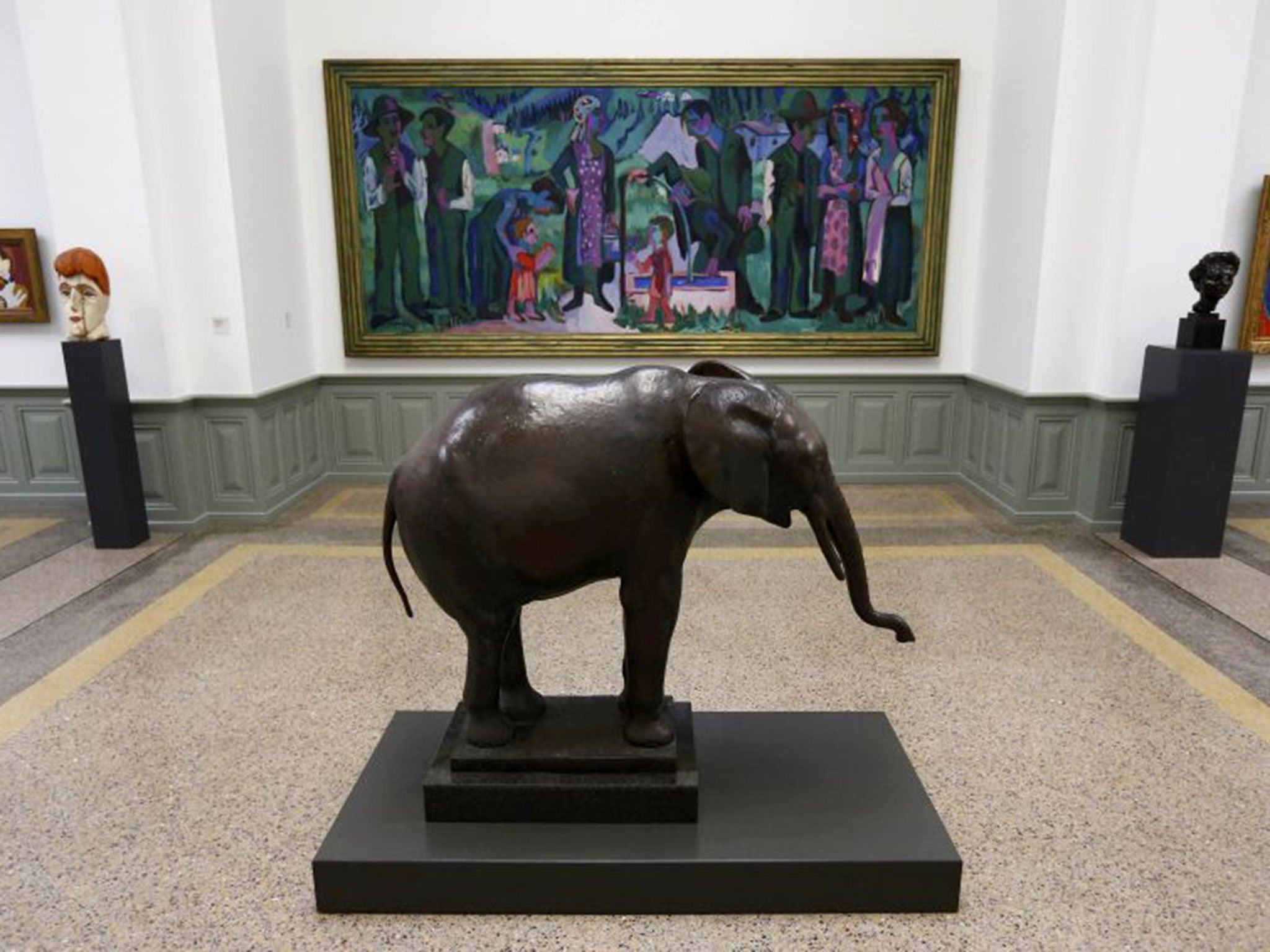Cornelius Gurlitt collection: Swiss museum signs deal to hand back vast collection of art stolen by the Nazis
Collector had bequeathed 1,280 artworks to Bern Art Museum, prompting outcry from Jewish groups

When Bavarian customs police pushed open the door of a run-down 1970s apartment in the fashionable Munich student district of Schwabing in February 2012, they expected to find bundles of euro notes hidden away in a wall safe or even in a kitchen cupboard.
They were flabbergasted by what they discovered: instead of banknotes they found what is now rated as one of the largest caches of suspected Nazi looted art discovered since Germany’s defeat at the end of the Second World War.
The Cornelius Gurlitt collection
Show all 6The massive treasure trove contained 1,280 artworks including previously unregistered paintings by modernist masters such as Otto Dix, Marc Chagall, Max Liebermann and Henri Matisse. “ The inside of the flat resembled a museum storeroom,” recalled one of the customs men involved. “The framed works were stacked on shelves, the unframed stuff was piled in drawers.”
Today, almost two years after the discovery of the huge and priceless hoard, Germany and the Bern Art Museum in Switzerland, to which the collection is bequeathed, signed what is hoped will be a landmark agreement, guaranteeing for posterity the return of looted Nazi art works to their rightful owners or heirs.
“We pledge to work with the German authorities to ensure that all looted art in the collection is returned to its rightful owners,” Christoph Schäblin, the director of the Bern museum, told a news conference in Berlin.
So far claims have been laid to at least six paintings in the Gurlitt collection. They include a work by Matisse entitled Seated woman and two paintings by the “Neue Sachlichkeit” artist Otto Dix. A drawing entitled Couple making music by the German romantic painter Carl Spitzweg was found last week to have been looted from its Jewish owner who was subsequently murdered in Auschwitz.
The “owner” of the massive collection was the reclusive Cornelius Gurlitt, who died aged 81 in May this year. He was the son of the famous half-Jewish art dealer Hildebrandt Gurlitt who was ordered by the Nazis, during the 1930s and early 1940s, to sell off works seized from Jews or those paintings which the Nazis had deemed “degenerate art” and stripped from German galleries and museums.
Cornelius Gurlitt never told anyone about the vast and priceless collection he inherited from his father. German customs police began investigating his background only after he was picked up during a routine hunt for tax evaders while travelling on a train from Zurich to Germany in 2010.
But when they eventually searched his flat, instead of making their hugely significant find public, opening the way to the flood of restitution claims that would inevitably follow, Germany imposed a news blackout on the discovery.
It was not until November 2013, when, acting on a tip-off from an insider, the German news magazine Focus revealed the existence of the huge hoard to the general public. The news prompted an outcry from Jewish institutions and organisations worldwide and prompted charges that Germany was yet again attempting to cover up its Nazi past. Gurlitt initially refused to surrender his paintings but later agreed to co-operate with the German authorities. But following his sudden death in May this year it emerged that he had bequeathed his entire collection to the Bern Art Museum. His decision provoked an outraged response from Jewish organisations.
Germany and Switzerland were hoping yesterday that much of the criticism raised over their handling of the Gurlitt affair would be dispelled by a special provision in their joint agreement. It stipulates that no works suspected of having being looted by the Nazis would be sent to Switzerland or enter the Bern museum.
No hiding Nazi terror
The pained expression of Chancellor Angela Merkel’s culture minister was evidence that Germany is desperate to avoid fresh charges that its efforts to deal with the vexed issue of Nazi “looted art” have been an abject failure.
As the terms of a complicated agreement on the future of the “Gurlitt collection” of 1,280 paintings bought and sold during the Nazi era were spelled out today, Monika Grütters told a packed press conference in Berlin: “Germany still has to address its responsibility towards those who were subjected to Nazi terror.”
The deal reached between the German government, Switzerland’s Bern Art Museum and the state government of Bavaria is an attempt to live up to that responsibility. Gurlitt bequeathed all of his 1,280 paintings to the Bern Art Museum, apparently because he had “happy memories of Switzerland”. However, under the agreement, more than 470 of the Gurlitt paintings will remain in Germany – the works in the collection which are believed to have been sold by their Jewish owners to Gurlitt’s art dealer father, Hildebrandt, at knock down prices or which were confiscated from them.
A task force has been set up to establish the identities of the paintings’ rightful heirs. The Bern Art Museum has said that it does not want any “looted art” on Swiss soil. Paintings exhibited in Germany will have an explanation of their origins.
Subscribe to Independent Premium to bookmark this article
Want to bookmark your favourite articles and stories to read or reference later? Start your Independent Premium subscription today.

Join our commenting forum
Join thought-provoking conversations, follow other Independent readers and see their replies